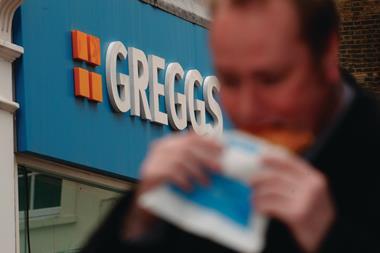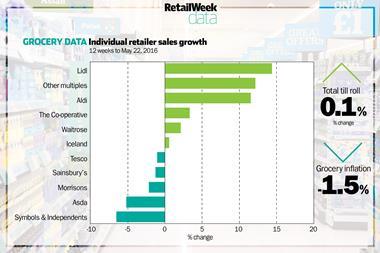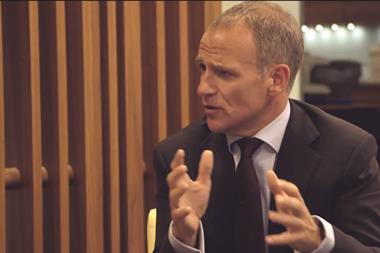Tesco joins Sainsbury’s in pulling out of food-to-go store trials. Retail Week looks at why grocers struggle to succeed in this market.
When Tesco opened its food-to-go store on Philpot Lane in the heart of the City of London in September 2014, the grocer’s managing director for London at the time Andrew Yaxley said the store was “a great example of Tesco providing the products and services that meet the shopping needs of our customers”.
The 1,000 sq ft store was pitched as a rival to Pret and Eat and, along with selling 100 types of sandwiches, sushi and soups, had a New York-style deli. Within months a further food-to-go store followed in Villiers Street, near London’s Embankment.

Less than 18 months later Tesco is shutting both stores. The grocer is not the first to fail to crack the market. Sainsbury’s Fresh Kitchen format opened in Holborn, London, in 2011 and closed just a year later.
Highly competitive sector
It is no surprise that the UK’s biggest grocers have made a play for the lucrative food-to-go market. Brits spend £4.4bn on sandwiches a year, as more people buy their lunch rather than make it at home.
However, it is a highly competitive space.
“In the past five years there’s been a revolution in food-to-go,” says Shore Capital head of research Clive Black. “There’s a plethora of new entrants and you can get food from every corner of the world.”
Meanwhile, existing players such as Pret and Eat have expanded rapidly and even Greggs has developed its offer, with the launch of more upmarket, sociable shops.
“To be competitive in this market would take a lot of management time and focus and operating resource. I think Tesco has got bigger fish to fry right now”
Clive Black, Shore Capital
The fact that grocers have not made an impact in this space is owing to a lack of skills in the area, says Black.
“It requires a different skill set and lots of attention,” he says. “To be competitive in this market would take a lot of management time and focus and operating resource. I think Tesco has got bigger fish to fry right now.”
Peter Backman, managing director at food service analysts Horizons, agrees, saying service expectations are different in this sector. “Customers want service with a smile, what they want, when they want and for it to be tailored for them. It’s very different to selling sandwiches in a supermarket.”
The rise of self-service tills means customers often choose to pass through supermarkets without speaking to a member of staff, but with food-to-go retailers the personal touch is still key, according to Backman.
Phil Dorrell, managing partner at consultancy Retail Remedy, says he is not surprised the grocers have found life difficult in this space as their in-store cafes and restaurants are not up to par.
“The in-store food offer of each one of the grocers has struggled, so it was obvious that food-to-go would be equally as bad,” he says.
He points out that Tesco has opted to buy in expertise for in-store food service, snapping up coffee shop Harris+Hoole and restaurant chain Giraffe.
It took a similar strategy in its food-to-go offer, partnering with both deli concept Fred’s Food Construction and Mexican specialists Burrito Kitchen for the trial.
Was burrito a no-no?
Verdict Retail senior consultant George Scott questions whether Tesco, and Sainsbury’s before it, failed because they didn’t have a strong enough point of difference.
Sainsbury’s Fresh Kitchen provided an offer not wildly different from its own stores, he says.
Tesco made more effort to differentiate the experience and product, however Scott questions whether it opted for the right point of difference – the Villiers Street store specialised in burritos, the trendy food stuff of the time, but was that the right niche for Tesco?
“Why would you choose to have a Tesco burrito rather than go to the latest pop-up around the corner?” he asks. “It makes sense to stick to what you’re good at and Tesco is a value retailer. It should have had entry level meal deals, supplemented by some higher margin areas.”
Tesco should have taken a leaf out of M&S Simply Food’s book and gone beyond simply selling sandwiches to office workers, says Scott. By selling food for tonight as well as food for now it could have increased spend.
A problem of perception
Kantar Retail analyst Ray Gaul questions whether a perceived lack of quality may have hit demand at Tesco’s food-to-go stores.
“There is a quality image that needs to be upheld. Perhaps there was mental barrier for some shoppers buying those items from Tesco”
Ray Gaul, Kantar Retail
There has been a move upmarket in sandwich chains, driven by the likes of Pret and a growth of operators offering bespoke sandwiches. “There is a quality image that needs to be upheld. Perhaps there was mental barrier for some shoppers buying those items from Tesco,” suggests Gaul.
Location, location, location
The central London locations chosen for Tesco and Sainsbury’s pilots may have also hampered their success, according to Scott.
“You have prime rents and a very competitive market. People’s expectations there are a lot higher. There is so much choice in one place, that they will move elsewhere if they’re not satisfied,” says Scott. “Outside of London it is far less competitive and they might have had more success.”
Scott points out that even the mighty McDonald’s stepped back from central London until it perfected its offer elsewhere in the UK.
Is Tesco right to say goodbye to food-to-go?
Black believes Tesco boss Dave Lewis is wise to call time on its assault on the sector. He says making a serious play here would divert attention from the grocery’s hefty challenge of turning around its core grocery business.
Dorrell agrees: “They should stick to what they’re good at.”
However, Scott believes Tesco should, and will, return to this space. “It’s a growth market. Grocers need to look at where they can grow as there’s not much growth in their core market,” he says. “I don’t see this as a failure. It has resources to trial new things. If anything it should try more things like this to try to widen its appeal.”
So perhaps Tesco will take a short lunch break before taking another bite at the apple.


























1 Reader's comment